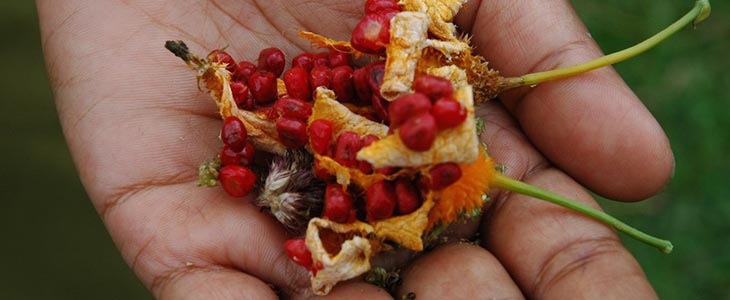
It should be emphasized that in situ conservation is not a short-term approach: on the contrary the timescale of concern is effectively open-ended.
Crop Wild Relatives (CWR) are a fantastic source of plant genetic diversity, and they constitute a vital resource in the efforts to globally secure food supply for mankind through improved agricultural production. The wild relatives can be found in many different habitats around the world, often in areas threatened by degradation. Protection of genetic diversity both in situ and ex situ is essential in the work with CWR conservation.
The goal of this module is to give an insight to the collected knowledge about CWR.
Crop Wild Relatives
Crop wild relatives (CWR) collectively constitute an enormous reservoir of genetic variation useful for plant breeding initiatives and critical to meeting the challenge of global food security through enhanced agricultural production. CWR occur in a wide range of habitats but are at great risk as habitats continue to be degraded worldwide. There is an urgent need to conserve CWR both in the wild (in situ) and in genebanks (ex situ) to ensure that genetic diversity remains available for future generations.
The key to successful crop improvement is a continued supply of genetic variability and beneficial traits contained in this diversity1, and wild relatives of modern crops are the source of much of this novel diversity, providing genes with improved nutritional quality, resistance to pests and diseases, as well those with traits adapted to drought and extreme temperatures.
1 - Dwivedi S.L., Upadhyaya, H.D., Thomas Stalker, H., et al. (2008) ‘Enhancing Crop Gene Pools with Beneficial Traits Using Wild Relatives’, Plant Breeding Reviews, vol 30, pp 180–230.
<i>In situ</i> conservation of CWR
Why is in situ conservation of CWR important?
Historically, the main conservation strategy for plant genetic resources (PGR) has been to store collected material ex situ in genebanks for use or potential use in plant breeding; little attention was paid to in situ approaches. The importance of in situ conservation has since been recognized as it allows populations to continue to evolve and generate new variation, some of which might be valuable for use in future breeding efforts.
Challenges of in situ Conservation of CWR
In situ CWR conservation is a complex and multidisciplinary process and the absence of practical experience and recommendations makes it even more difficult. Many challenges of a technical nature exist, as well as an equal number of political, institutional, cultural, legal and social challenges, including:
- Agencies which often have no linkages or history of cooperation must work together, presenting considerable obstacles for partnership and coordination;
- CWR are not usually considered as flagship species and are often given little attention and resources by both government agencies and the general public;
- A low level of understanding and awareness of the importance of CWR and the threats posed by global change exists;
- Limited capacity to utilize existing information which is highly dispersed;
- Conservation actions are often project-driven and therefore time-bound, affecting their sustainability and long-term impacts.
The UNEP/GEF project
The project, ‘In situ conservation of crop wild relatives through enhanced information management and field application’ (CWR Project), supported by UNEP/GEF (United Nations Environment Programme/Global Environment Facility), aims to satisfy national and global needs to improve global food security through effective conservation and use of CWR.
Five countries are involved in the project– Armenia, Bolivia, Madagascar, Sri Lanka and Uzbekistan. International partners include the Botanic Gardens Conservation International (BGCI), Food and Agricultural Organization of the United Nations (FAO), International Union for Conservation of Nature (IUCN) and the UNEP World Conservation Monitoring Centre (UNEP-WCMC). The Executing Agency is Bioversity International (formerly IPGRI).